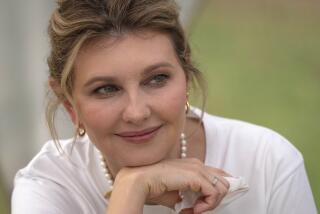A staggering refugee burden evokes a haunting history in Polish capital
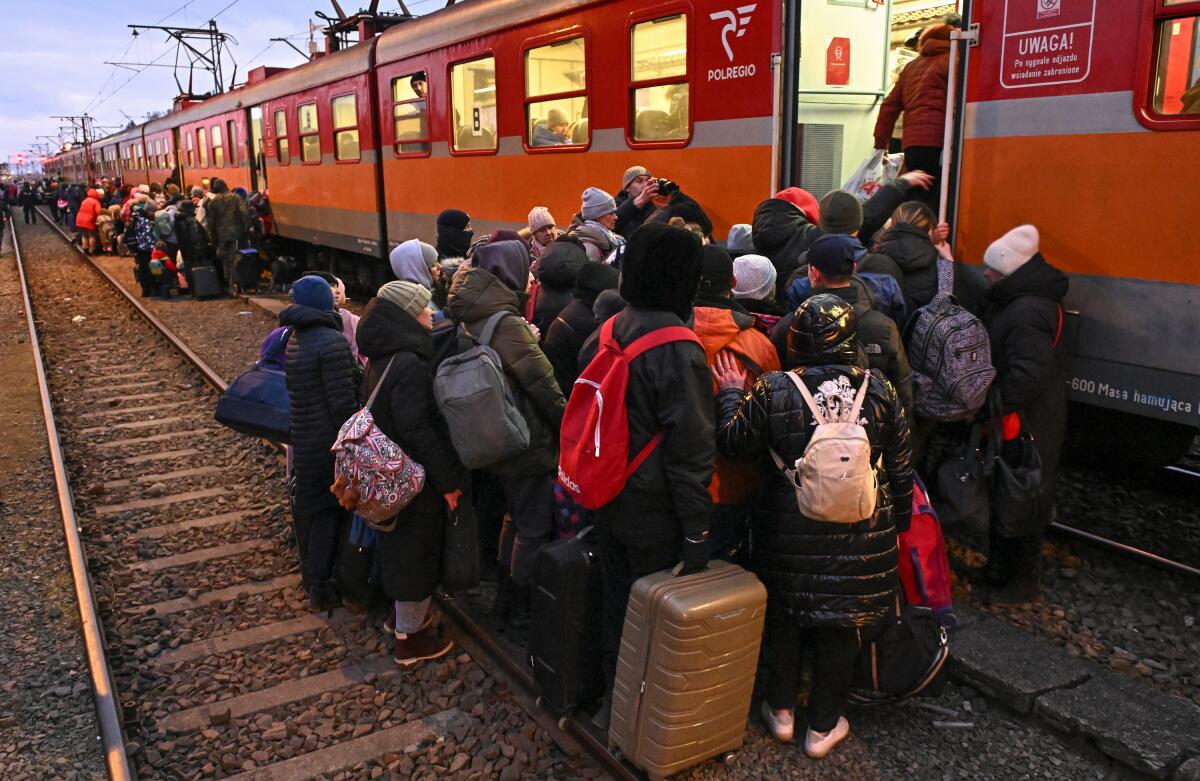
- Share via
WARSAW — Eighty years ago, Adolf Hitler nearly wiped Warsaw off the map. Now, a city whose history is written in ash and blood, an age-old crossroads of wartime tragedy, is bursting with Ukrainian refugees.
Poland has taken in more people fleeing the conflict in Ukraine than all other countries combined, the United Nations says. Of the more than 5.3 million people who have sought shelter outside the country, almost 3 million crossed into Poland.
Some have moved on to other European countries; others have made the journey back, although the war is still raging and their homeland remains battered and dangerous.
But about a tenth of those arrivals — an estimated 300,000 people, almost all of them women and children — are in the Polish capital, straining a city where social services were already stretched. Day care and cancer treatment, classroom spots and affordable housing, counseling and physical therapy are now in short supply.
“We are full,” said Mayor Rafal Trzaskowski. “We’re at capacity.”
With the war in Ukraine in its third month and no diplomatic solution in sight, some are wondering how long Polish hospitality for neighbors in desperate need will last before there’s a backlash. In a matter of weeks, the city’s population jumped by nearly one-fifth.
“I’m pretty sure at some point there will be resentment,” said Karolina Lukasiewicz, a migration researcher at the University of Warsaw. “It’s all a massive, massive challenge.”
As Poland is hailed by the Biden administration as an indispensable ally in the Western front against Russian aggression, the country’s internal political tensions, and its right-wing government’s quarrels with the European Union, have been relegated to the background. But they won’t stay there indefinitely.
And the painful contrast between the opening of homes and hearts to Ukrainians, overwhelmingly white and Christian, after mainly Middle Eastern migrants were left to freeze in the forests of the blockaded border with Belarus, is a source of shame for many Poles.
“It’s racism — there’s just not another word for it,” said Maciej Kisilowski, an associate professor of law at Central European University in Vienna.
Still, among ordinary people and disparate organizations that are offering assistance to the Ukrainians, this is a fateful moment — when the ghosts of the past mingle with the horrors of the present.
“How could we not do everything?” said Leslaw Piszewski, a leader of Warsaw’s Jewish community, whose rescue efforts began in the war’s first hours. “Here, in this place, with all that has happened here, how can we not do everything to help?”
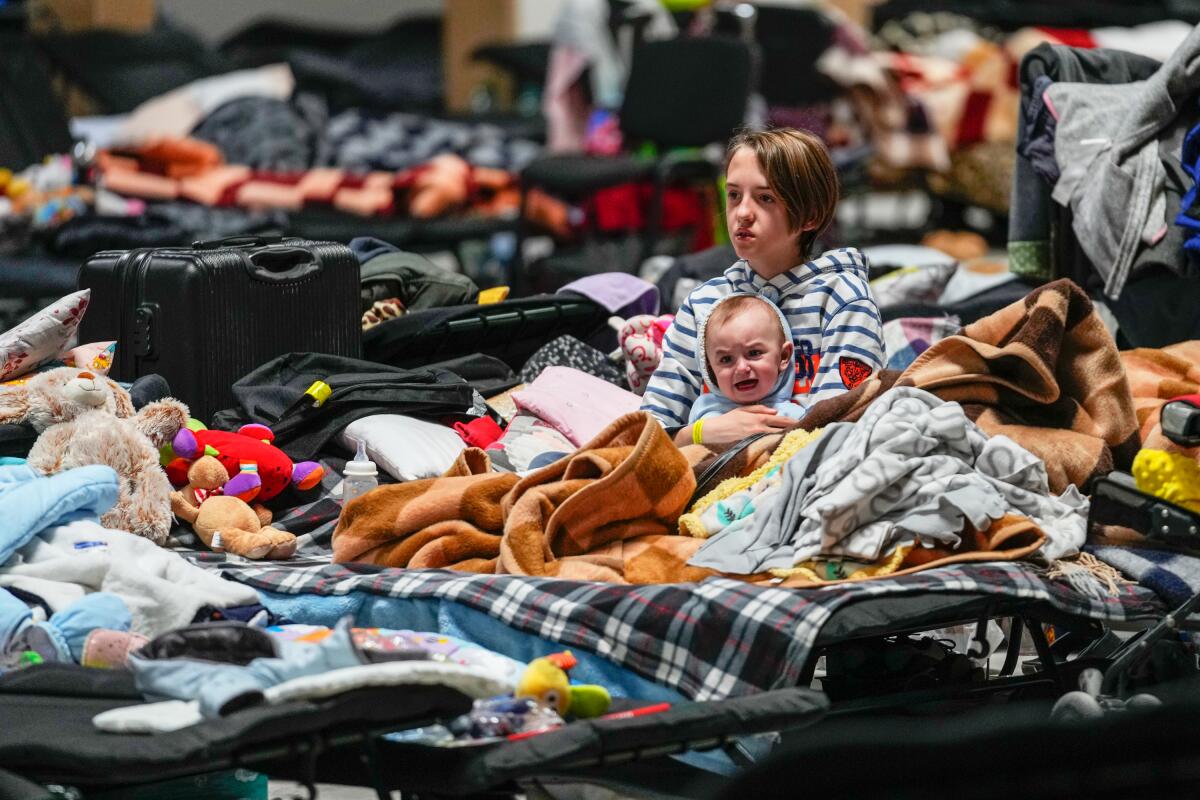
::
At a well-appointed Warsaw shopping mall, Nadia Fortuna, a 28-year-old manicurist who fled Ukraine weeks ago with her son and mother, studied nail polish colors at a cosmetics kiosk. Neon blue, hot pink, acid green.
Fortuna had packed the tools of her trade when she tearfully kissed her mechanic husband goodbye and boarded a train out of Ukraine, leaving their home near Lviv. But now she needed a wide selection of colors for what she hoped would be new Polish customers for manicure and pedicure services she plans to provide from a home in exile she had yet to find.
A donor had earmarked 1,000 Polish zlotys, about $225, as seed money for the manicure project. Zosia Radziwill, a 32-year-old Polish volunteer who has become a fast friend, offered a distraction of quick, bright patter when the bill came to a bit more than that.
“Don’t tell her!” she murmured, surreptitiously making up the difference from her own pocket.
She and Fortuna, who is tall and black-haired with a calm demeanor, were laughing together over a misunderstanding — one of countless linguistic confusions, although the languages have a degree of overlay — based on the similarity of respective Ukrainian and Polish words for smelling and hearing.
One was talking about scent, her friend was thinking of sound, and both were momentarily puzzled. A translation app solved the mystery.
Radziwill, who has enlisted a large network of friends on social media to find temporary housing and other services for the refugees, said she was initially worried about how the country would respond.
“I was afraid of xenophobia,” she said. “But it’s not happening. At least not yet.”
While her son ran over to a giant sculpted likeness of an ice cream cone outside a confectioner’s stand, blissfully throwing his arms around it, Fortuna took advantage of a moment out of his hearing to talk about their new life in Warsaw.
“I feel welcome,” she said. “But I worry all the time. About everything.”
The hardest thing, she said, was when Tymur asked when he would see his father, who, like most fighting-age men — those 18 to 60 — was required to remain behind in Ukraine.
Every day, many times a day, the little boy posed the question. Today? Tomorrow? Next week?
Suddenly, Fortuna was in tears. Radziwill hugged her.
::
When the war next door broke out, school principal Tomasz Remiszewski knew he had to act. His district, in Warsaw’s Bialoleka suburb, was one of the city’s fastest-growing, with a large and yet unfilled wing of classrooms.
Within a matter of days, the first of more than 150 Ukrainian students — a quarter of the number of existing pupils — were settling in at Primary School No. 361, which was already festooned with paper hearts in blue and yellow, the colors of the Ukrainian flag.
School administration, Remiszewski said, can be a lumbering bureaucracy, and he quickly faced multiplying challenges: scrambling to find Ukrainian-language instructors and invoking a heretofore little-used regulation about the temporary waiving of in-country professional credentials. Getting the classrooms furnished and ready. Making swift changes to a budget allocated months in advance.
And most importantly, talking to the kids and their parents, new and old.
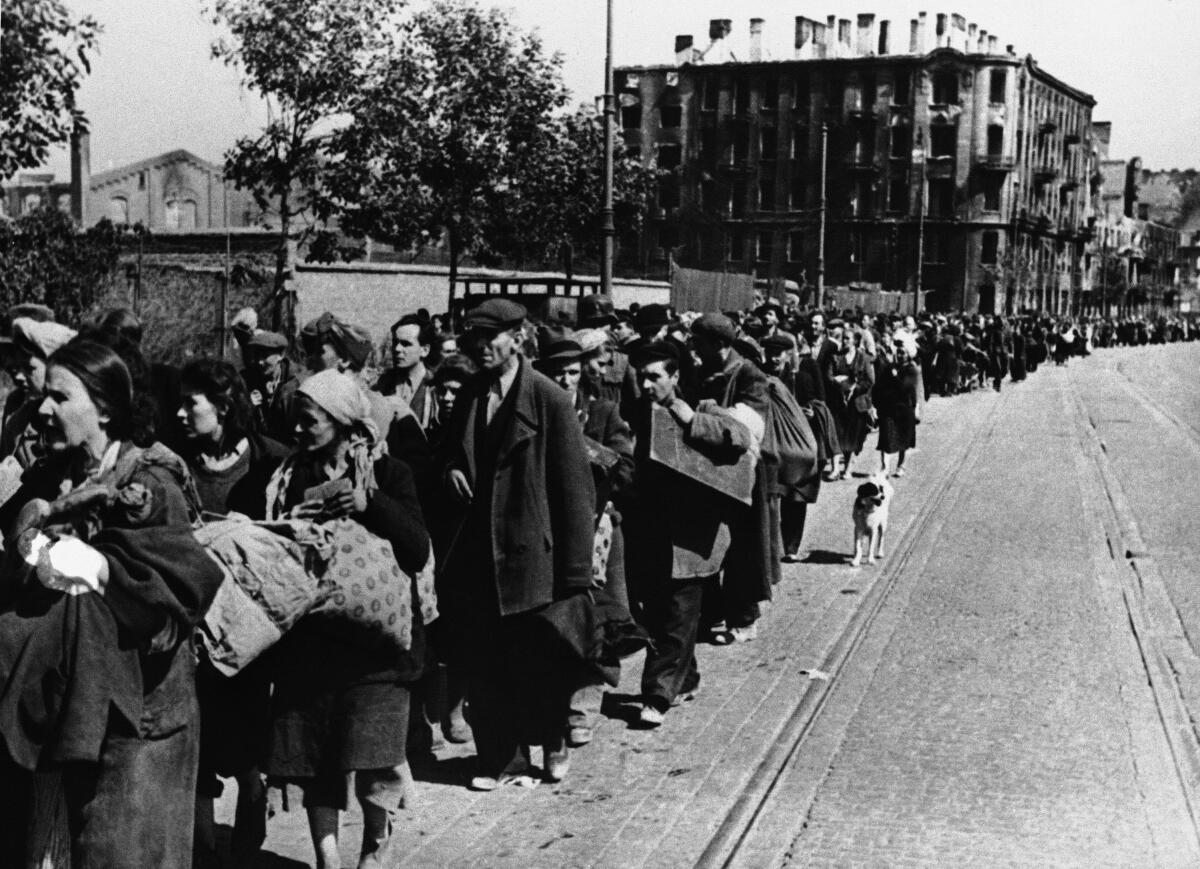
Long columns of Polish men and women move through the streets of Warsaw en route to less destroyed areas on Sept. 15, 1944.
An educator for 22 years, Remiszewski said he knew the Ukrainian students could not keep up with instruction that was all in Polish, yet he did not want them to be in “a sort of ghetto.” He rushed to find ways to integrate activities: sports, arts, mingling for meals.
But he said it was the students, who range in age from 7 to 15, who took the lead.
It hasn’t been without bumps. One day, two boys got in a fight, a schoolyard commonplace — except that one was Ukrainian and the other Polish. The Polish youngster emerged bloodied; the Ukrainian boy’s mother was panicked and mortified. Remiszewski rushed to smooth things over.
“It wasn’t politics or anything like that!” he said, calling it “sport emotion.”
Plus, he added with the barest hint of an eyeroll: They’re 14.
For foreign pupils, the question of language can be fraught. Kids can quickly pick up a new tongue, but doing so, perhaps leaving their parents behind in comprehension and speaking ability, can be a heavy emotional burden.
“Some of the kids don’t want to learn Polish, because they have the idea that it means they’re giving up on the idea of going home,” said Remiszewski, whose family has taken in a math teacher from Kyiv. “I ask their parents if they’re going to stay or go — back to Ukraine, farther west to Germany or the U.K., and all they can say is that they don’t know.”
Some of the younger students have learned to write their names in the modified Roman alphabet used in Polish, while others use Ukrainian-language Cyrillic lettering. On a bulletin board, drawings of flowers by the youngest children bore their names, signed in both.
The artwork can be telling; older Ukrainian students’ depictions of a seemingly placid forested landscape were mainly executed in dark, brooding tones.
Human nature, with all its jealousies, is a factor in daily interactions with parents and pupils alike.
The earliest wave of refugees included some affluent Ukrainians who drove into Poland from towns near the border. Some Polish parents, seeing a few of the new kids dropped off in expensive cars, voiced irritation about special aid, such as subsidized lunches, being made available to the new arrivals.
“So I asked them, ‘Would you like to change places with them?’ ” said Remiszewski.
“I asked, ‘Would you rather be the one to have lost your home, your livelihood, to have loved ones who died, to be afraid for your country and whether it will continue to exist — all that, in order to have a free meal?’ ” he said.
That silenced the complaints. At least for now.
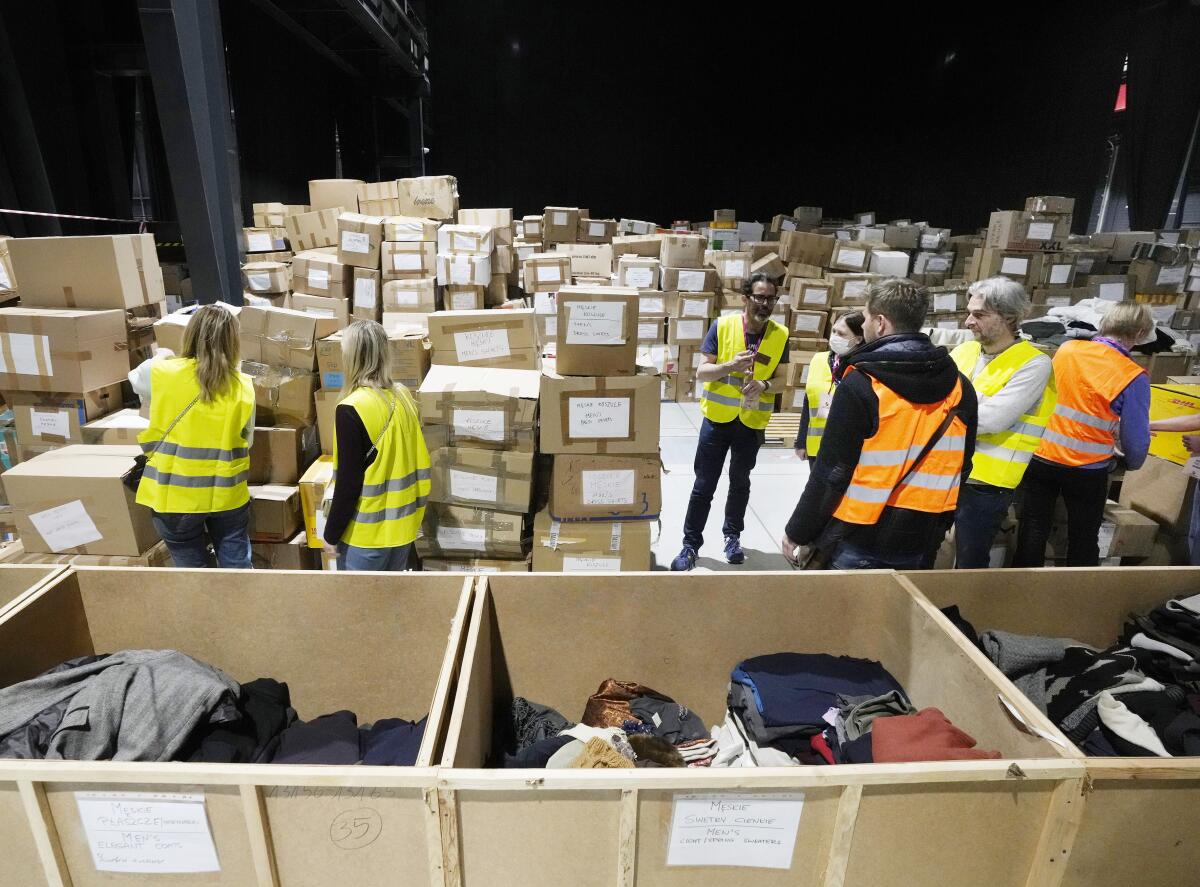
::
Municipal gestures of solidarity with the refugees, even if heartfelt, are sometimes largely symbolic. The Warsaw city government announced this month, with some fanfare, that it was designating a derelict and longtime legally contested Russian compound on the city’s southern outskirts for use by Ukrainian refugees.
But the boarded-up, water-stained complex — dubbed “Spyville” by locals in reference to nefarious theories over its Soviet-era purposes — would require extensive renovation before it was suitable for those seeking to start new lives.
The Polish government has quickly allowed Ukrainians to get social security numbers to be able to legally work. Many of the arrivals, though, are mindful that — as happens with refugees everywhere, some doctors end up driving taxis, professors painting houses — they will need to take whatever work they can find.
Olga Budina, 35, worked in a computer store in her hometown outside Lviv, but with a child to support, she expects to turn to menial labor. “I could be a cleaner, maybe?” she said tentatively.
Her 6-year-old son looked up with the same somber, unflinching look many of the refugee children have, his eyes never leaving her face.
::
Bitter herbs, melodious chants, a narrative of exodus: With Ukrainian sunflowers for centerpieces, Warsaw’s Jewish community welcomed the strangers among them on the first night of Passover, which fell this year on April 15.
Larysa Vefmymenko, a 72-year-old documentary filmmaker from Kyiv, isn’t Jewish, but she said she felt at home, marking the holiday with new friends. It was, as well, a distraction about her fears for loved ones back in the Ukrainian capital.
“When we crossed the border, we found love and welcome,” she said.
Terese Shiechowska, who has hosted Vefmymenko in her home for several weeks, said she and other members of Warsaw’s small Jewish community — one of the largest in Europe before World War II, making up nearly a third of the city’s prewar population — had no hesitation about doing what she could to help.
“It’s a mitzvah,” she said. “Everything that’s happening, it’s right next door.”
Piszewski, the Jewish community leader, said the tales of escape he heard in his first days and nights on the Polish-Ukrainian border, where he rushed after the outbreak of fighting, had a haunting familiarity.
“A car but no gas, or gas but no car, a woman and her three kids who haven’t slept for three nights, people who are running away and don’t know what to do, people with suitcases, or only with the clothes they’re wearing,” he said. “Every Jew knows what this means.”
Although the community initially searched for Ukrainian Jews to assist, the net has been cast wider and includes non-Jewish volunteers to help refugees. One of Piszewski’s key partners in coordinating housing, transport and medical care for hundreds of the new arrivals has been an Orthodox priest.
Piszewski, 66, is a child of Holocaust survivors, Polish Jews who hid away during the war and concealed their true identities afterward out of fear. He did not learn of his heritage until he was a teenager.
“The will to help exists — it’s like a flame of goodwill,” he said. “For me, there’s something magic about this work.”

::
For Fortuna, the Ukrainian manicurist, it was an auspicious day — lucky, even, in the context of terrors and setbacks that have marked the weeks since Feb. 24, when the war began.
She, her mother, her son and her teenage brother were being offered a Warsaw apartment at far below market rate, courtesy of Radziwill’s network of friends.
In a run-down but gentrifying district, the fifth-floor flat was bare, but it had big windows and a balcony. As Fortuna paced the room, measuring where beds would go, Radziwill was on her phone, scouring a spreadsheet of donated furniture — “Oh, look, nice couch.”
The living room would serve as a bedroom for Fortuna, her mother, Iryna, and little Tymur, and the small bedroom would be a workspace for giving manicures, with a daybed for Dmytro, the brother. There was a day-care center across the street.
It could all work, they decided, and fell to quickly conferring: the refrigerator, it can stay. That shelf can go over there.
Looking around, a little of the tension melted from Fortuna’s face. It was a home — if only a temporary, tenuous one. Until they could return to Ukraine.
“Everything,” she said, “is enough.”
More to Read
Sign up for Essential California
The most important California stories and recommendations in your inbox every morning.
You may occasionally receive promotional content from the Los Angeles Times.


